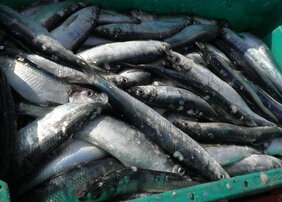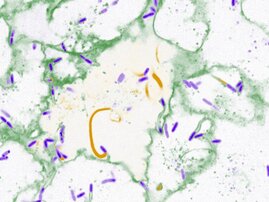Today’s DNA technology opens new doors to our past, and not only through Svante Pääbo’s research on ancient human bones: A group of researchers collected herring bones from seven different archaeological excavations around the Baltic Sea, and through DNA analyses, the researchers received information about where the fish was swimming when it was caught.
“We have sequenced the complete DNA of 40 herrings from the 9th to the 17th century, where their age has been based on archaeological excavations. From the DNA, we could identify which herring population the bones came from, for example based on genes for the fish’s tolerance to brackish water,” says Carl André, evolutionary biologist at the University of Gothenburg.
Fish from Denmark found in Poland
Something that surprised the researchers was that 9th century fish bones found in the medieval town of Truso located in today’s Poland, probably were fished in the Danish straits nearly a thousand kilometers from Truso. It shows that herring early was a commodity traded over large distances. Archaeologists have also found herring bones originating from the western Baltic Sea even further south in Poland.
“That shows fishing wasn’t only for household needs. In the past, herring were fished when they were spawning and could be landed relatively easily with the boats and the gear of that time. Ideally, you should avoid to fish herring during their spawning period to protect regeneration,” says Carl André.
Overfishing in the 13th century
Although fishermen in the Middle Ages didn’t have access to today’s modern trawls, fishing could be heavy also in the past. In the analysed fish, there are signs that some populations were overfished, the researchers conclude in the study published in PNAS, Proceedings National Academy of Science. By studying the genetic variation in a population, the researchers can assess how the population has varied in size: A smaller genetic variation range today, indicates that the population was heavily strained in the past.
“This study shows that the people living near the Baltic Sea have fished on a large scale in early times. We have a lot of evidence indicating that the herring was overfished already in the 13th century. Although there are other factors affecting herring survival, such as climate, human fishing is the most important,” says Carl André.
The herring population in the Bothnian Sea and Gulf of Bothnia has been spared from heavy fishing in ancient times. Fewer people lived up north, and the ice period lasted longer; factors that protected the herring. But not anymore.
“We see recurring overfishing of the different herring populations in the Baltic Sea, and we are right now heavily straining the last viable population.”
(Schwedischer Forschungsrat - The Swedish Research Council)
Originalpublikation:
PNAS: Population dynamics of Baltic herring since the Viking Age revealed by ancient DNA and genomics
https://www.pnas.org/doi/10.1073/pnas.2208703119





